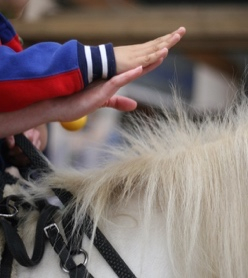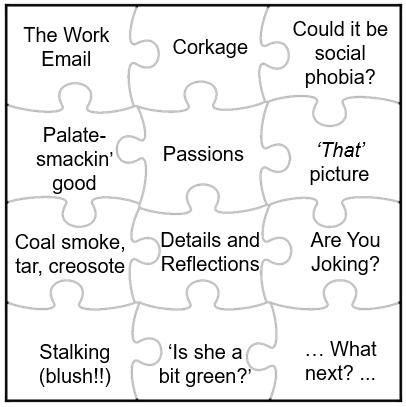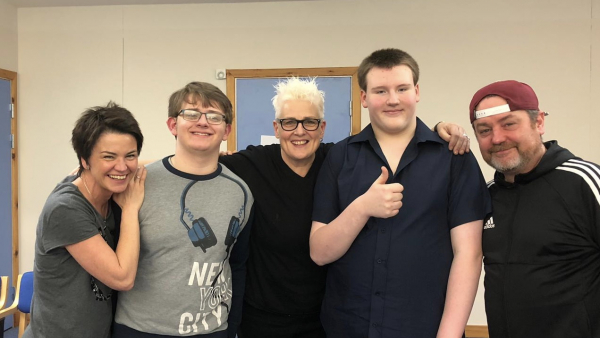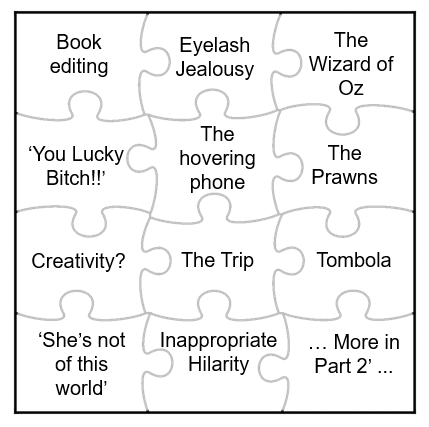"It's all about Timing' The Therapeutic Rhythms of Equine Therapy and Autism
Roslyn Malcolm, Phd Student, University of Edinburgh
What people need to undertand is that nothing changes about your autism from when you are little to when you grow up. The sensory problems and social problems and stimming are all there. You just develop better coping strategies
This quote highlights the importance of developing appropriate care practices to help autistic people to cope with day to day life. It comes from one of the people I got to know during 16 months of ethnographic fieldwork as part of a research project on equine assisted therapy and autism. This was based within the Edinburgh Centre for Medical Anthropology (EdCMA) at the University of Edinburgh, and funded by the Economic and Social Research Council (ESRC). Many reports regarding the effects of animal-assisted therapies for autistic people have emerged in recent years. I wanted to explore how, exactly, it was that these therapies were understood to help and what this could tell us about autism. Understanding autism as a condition broadly produced in inhabiting the social and sensory world I felt that an anthropological approach focusing on the lived experience of autistic people would be a good way of exploring this phenomenon.
How did these therapies work? Unsurprisingly, in the context of a condition arguably defined by its diversity of expressions and experiences, it was complicated! An understanding of autism as more akin to a multidimensional constellation than a linear spectrum is emerging in the field of autism research. This is reflected in the following quote from one of the people I got to know, “I see so many kinds of autistic people. There are as many spectrums as there are stars in the milky way. It is almost limitless”. With this manifold diversity firmly centre stage, one aspect emerged as a factor uniting the particular people who attended the centres where I was based: sensory idiosyncrasies.
For younger children, riding together in the saddle with the practitioner each week was believed to offer a social space free from what can - for some people - be problematic expectations for eye-contact and provide a sense of control, freedom and power. It also allowed practitioners to gain deeper insight into the stimming practices the people they worked with used to self-soothe. Physical proximity to the bodily tensions of autistic riders helped practitioners gauge responses to problematic aspects of the sensory environment. This embodied intuition is arguably important for working with those with less, little or no verbal communication, and particularly for those younger people with autism. Practitioners focused on learning about the sensory idiosyncrasies of each client – including ‘the five senses’ alongside sense of balance (equilibrioception), the sense of one’s position in space (proprioception), and one’s sense of movement through space (kinaesthesia). Practitioners of the therapy felt that by doing so they could build a deeper, working knowledge of the sensory preferences of each person they worked with.
By moving on horseback through quiet outdoor spaces free from as many negative sensory triggers as possible, and with a detailed working knowledge of the sensory profiles of their clients, practitioners felt they could help to calm sensory discomfort and allay any sensory overload. After weeks and months of learning about these sensory worlds, practitioners went on to devise routines of movement to help children relax upon the horse. Good sensory triggers particular to each client would be used. These understandings were then used to develop tasks to find modes of communication, in formats defined by the client.
One of the people I got to know told me about his experiences in school where, “teachers tried constantly to stop me from engaging in my interests, to change my behaviours. And so I didn’t understand how my interests could be a source of power and strength for me”.
He defined stimming as one of these behaviours, and relatedly as a coping practice. As he put it, “stimming… is something autistic people find incredibly soothing and pleasurable, it’s kind of like a feeling of calm, happiness and pleasure. So if you see someone stimming, don’t worry or try to stop them. Just leave them alone”. Practitioners of the particular method I explored did not try to stop stimming, instead working with these practices as a route to finding joint embodiments and attention, and meaningful interactions. They did what they could to provide what they understood to be spaces in which sensory overload could be limited.
The quote in the title is from one of the practitioners I got to know. As it intimates, practitioners felt that timing was key to therapeutic success. In trying to encapsulate how these processes were understood to help autistic people, I took their cue and looked to space and time in particular. Research has shown that circadian and social rhythms can be altered in people with autism (Tordjman et al. 2015, Geoffray et al. 2016). On this basis, practitioners worked to “entrain” clients with the rhythms of horseback movement through sensorially calming spaces in order to help soothe sensory discomfort and provide a level of calm. In so doing, clients could learn new communicative strategies and be brought ‘into sync’ with the rhythms of social time, such as the back and forth of various (not only verbal but also bodily and auditory) forms of communication. These were carried out with the overall aim of teaching the necessary skills for self-advocacy in the future.
This process required taking significant periods of time. These long periods of time allowed for the practitioner to be open to following the person as they engaged in the world through their stimming practices. These meaningful processes of getting to know those being cared for are required to help autistic people cope on a day to day basis. As widely promoted, awareness about autism has been raised, what is needed now is understanding and acceptance. In the context of equine therapy – and arguably beyond - this is thought to take a combination of affective time and spaces designed around sensory issues.
i Tordjman, S. Davlantis, K.S, Georgieff, N., Geoffray, M., Speranza, M., Anderson, G.M., Xavier, J., Botbol, M., Oriol, C., Bellissant, E., Vernay-Leconte, J., Fougerou, C., Hespel, A., Tavenard, A., Cohen, D., Kermarrec, S., Coulon, N., Bonnot, O. and Dawson, G. (2015). Autism as a disorder of biological and behavioural rhythms: toward new therapeutic perspectives. Frontiers in Pediatrics.
ii Geoffray, M.M., Nicolas, A. Speranza, M. Georgieffa, N. (2016). Are circadian rhythms new pathways to understand Autism Spectrum Disorder? Journal of Physiology-Paris, 110(4):434-438.





